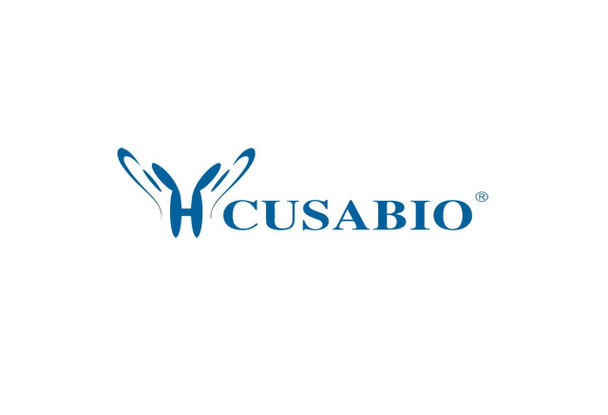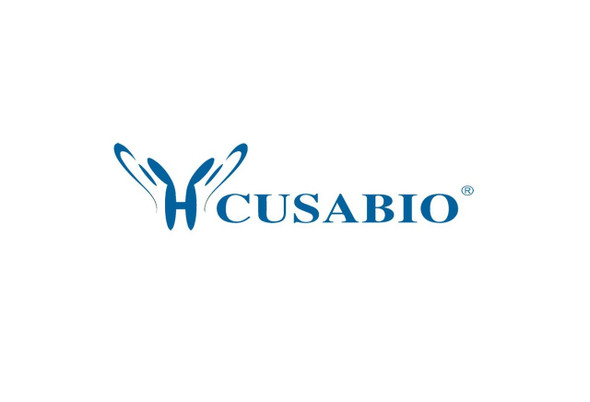Cusabio Human Recombinants
Recombinant Human MARCKS-related protein (MARCKSL1) | CSB-EP013494HU
- SKU:
- CSB-EP013494HU
- Availability:
- 13 - 23 Working Days
Description
Recombinant Human MARCKS-related protein (MARCKSL1) | CSB-EP013494HU | Cusabio
Alternative Name(s): MARCKS-like protein 1 Macrophage myristoylated alanine-rich C kinase substrate
Gene Names: MARCKSL1
Research Areas: Signal Transduction
Organism: Homo sapiens (Human)
AA Sequence: MGSQSSKAPRGDVTAEEAAGASPAKANGQENGHVKSNGDLSPKGEGESPPVNGTDEAAGATGDAIEPAPTSQGAEAKGEVPPKETPKKKKKFSFKKPFKLSGLSFKRNRKEGGGDSSASSPTEEEQEQGEIGACSDEGTAQEGKAAATPESQEPQAKGAEASAASEEEAGPQATEPSTPSGPESGPTPASAEQNE
Source: E.coli
Tag Info: N-terminal GST-tagged
Expression Region: 1-195aa
Sequence Info: Full Length of BC066915
MW: 46.5 kDa
Purity: Greater than 90% as determined by SDS-PAGE.
Relevance: Controls cell movement by regulating actin cytoskeleton homeostasis and filopodium and lamellipodium formation. When unphosphorylated, induces cell migration. When phosphorylated by MAPK8, induces actin bundles formation and stabilization, thereby reducing actin plasticity, hence restricting cell movement, including neuronal migration. May also affect cancer cell migration. May be involved in coupling the protein kinase C and calmodulin signal transduction systems
Reference: "Global, in vivo, and site-specific phosphorylation dynamics in signaling networks." Olsen J.V., Blagoev B., Gnad F., Macek B., Kumar C., Mortensen P., Mann M. Cell 127:635-648(2006)
Storage: The shelf life is related to many factors, storage state, buffer ingredients, storage temperature and the stability of the protein itself. Generally, the shelf life of liquid form is 6 months at -20?/-80?. The shelf life of lyophilized form is 12 months at -20?/-80?.
Notes: Repeated freezing and thawing is not recommended. Store working aliquots at 4? for up to one week.
Function: Controls cell movement by regulating actin cytoskeleton homeostasis and filopodium and lamellipodium formation. When unphosphorylated, induces cell migration. When phosphorylated by MAPK8, induces actin bundles formation and stabilization, thereby reducing actin plasticity, hence restricting cell movement, including neuronal migration. May also affect cancer cell migration. May be involved in coupling the protein kinase C and calmodulin signal transduction systems (By similarity).
Involvement in disease:
Subcellular Location: Cytoplasm, Cell membrane, Membrane, Lipid-anchor
Protein Families: MARCKS family
Tissue Specificity:
Paythway: FcgammaR-mediatedphagocytosis
Form: Liquid or Lyophilized powder
Buffer: If the delivery form is liquid, the default storage buffer is Tris/PBS-based buffer, 5%-50% glycerol. If the delivery form is lyophilized powder, the buffer before lyophilization is Tris/PBS-based buffer, 6% Trehalose, pH 8.0.
Reconstitution: We recommend that this vial be briefly centrifuged prior to opening to bring the contents to the bottom. Please reconstitute protein in deionized sterile water to a concentration of 0.1-1.0 mg/mL.We recommend to add 5-50% of glycerol (final concentration) and aliquot for long-term storage at -20?/-80?. Our default final concentration of glycerol is 50%. Customers could use it as reference.
Uniprot ID: P49006
HGNC Database Link: HGNC
UniGene Database Link: UniGene
KEGG Database Link: KEGG
STRING Database Link: STRING
OMIM Database Link: OMIM









